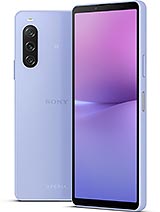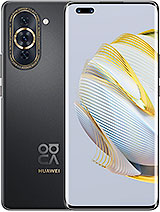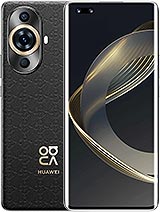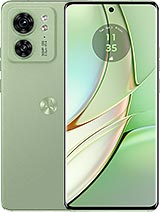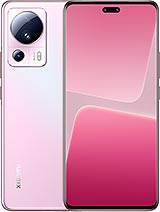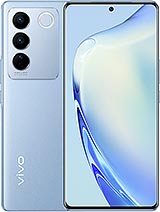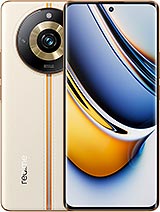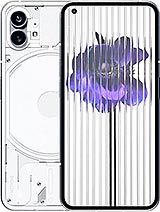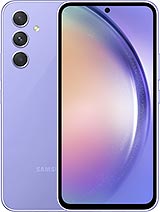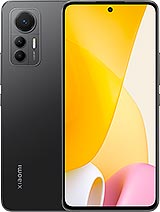Huawei nova 11 Pro review

6.78-inch OLED remains unchanged
The nova 11 Pro features what appears to be the same 6.78-inch display as the previous model. It's an OLED panel with a slightly unusual resolution of 1,200x2,652px in a similarly unorthodox 19.9:9 aspect ratio (429ppi pixel density). The display supports a 120Hz refresh rate with a maximum sampling rate of 300Hz, and 10-bit color, as well as HDR10.

Our brightness testing returned somewhat different numbers than what we measured on the old model, with the nova 11 Pro being unable to quite match the 10 Pro's nits. We measured 702nits on the nova 11 Pro with adaptive brightness enabled and the phone placed under bright light - short of the 10 Pro's 784nits and lower than most potential competitors. The nova 11 Pro was a similar 10-ish percent less bright than the 10 Pro when adjusting the slider manually, but that number is still higher than most.
The above results are what we got in the default Vivid color mode, mind you, while in Natural mode, we did manage to squeeze 737 and 540nits, respectively - so Normal can be that tiny bit brighter.
Color accuracy
Speaking of color modes, there are just those two on the nova 11 Pro. Vivid was the default this time around (the nova 10 Pro was pre-set to Normal), and it's the mode that delivers an overall livelier output and supposedly wider color gamut, though we couldn't quite get full DCI-P3 coverage.
Normal mode should be able to auto-select between DCI-P3 and sRGB color spaces based on content, but we only really managed to get sRGB readings for it - admittedly, very good overall accuracy, with the exception of the relatively visible purple shift to the whitepoint and the grays.
Vivid was leaning even more heavily into purple, in fact, and in both modes, the 'Warm' color temperature setting didn't bring all that much accuracy to the grays. Fiddling with the color wheel does remain an option if you want to tweak the color presentation.
HDR and streaming
Just like the nova 10 Pro, the 11 Pro supports HDR10, and hardware scanning apps report this capability. Widevine L1 support, which should allow high-res HDR streaming of DRM-protected content.
A sideloaded Netflix app didn't allow HDR content (as expected), but it was happy to play back at 1080p resolution, a welcome development over the nova 10 Pro's SD-only behavior.
The web version of YouTube did play up to 4K resolution clips, but HDR isn't available there either. Then again, the YouTube app within GBox did play back 4K HDR content.
Refresh rate
You get three options in the refresh rate settings on the nova 11 Pro - Standard (60Hz), High (120Hz), and Dynamic.

Both Standard and High modes maintain their respective nominal refresh rates - High will stick to 120 even when displaying static images, though it will switch down to 60Hz for apps that don't support higher frame rates like Petal Maps or the camera viewfinder.
Dynamic mode is what will get you some adaptive behavior - the phone will switch down to 60Hz after a few seconds of inactivity. In this mode, games that would otherwise be allowed 120Hz in High mode, tend to be capped at 60Hz, so keep that in mind.
Huawei nova 11 Pro battery life
The nova 11 Pro maintains the battery capacity of the 10 Pro and with 4,500mAh worth of power, is about adequately equipped. The fact that there are essentially no hardware changes that would directly affect battery life led us to expect similar endurance out of the new phone, and indeed, it posted the exact same Endurance rating of 89h, and the minor differences in the individual tests are what we'd consider to be within the margin of error of our tests.

Our battery tests were automated thanks to SmartViser, using its viSerDevice app. The endurance rating denotes how long the battery charge will last you if you use the device for an hour of telephony, web browsing, and video playback daily. More details can be found here.
The nova 11 Pro's screen-on test results are below average for the class. Competitors routinely last 20h in video playback, while the Huawei manages 'only' 15h. Rivals can also do an extra hour or more of web browsing too. Not bad results from the nova, but trailing the pack anyway.
Video test carried out in 60Hz refresh rate mode. Web browsing test done at the display's highest refresh rate whenever possible. Refer to the respective reviews for specifics. To adjust the endurance rating formula to match your own usage - check out our all-time battery test results chart.
Charging speed
What the nova 11 Pro lacks in longevity, it makes up for in charging speed. The bundled 100W Huawei SuperCharger adapter, complete with a 6A-capable cable, are the same as the ones we found in the nova 10 Pro's box, but we got notably faster charging speeds on the new phone.

Using the included adapted, we measured peak charging rates at around 88W, which is close enough to the nominal figures. While we don't normally record a full charging curve, the snapshots we have at 15mins and the time it takes for the nova 11 Pro to reach 100% suggest that the new model is more eager to maintain that peak rate for longer.
Indeed, a full charge in 23mins and 73% in just 15mins are properly impressive numbers - particularly so for the class, but also in general.
On the nova 10 Pro, this Turbo charging mode needed to be enabled every time you wanted to use it by long-pressing the charging animation that showed up when plugging in the charger - there was no setting in the menu to make that behavior stick. The nova 11 Pro here doesn't have such a setting either, and we still had to enable the Turbo charging, but the phone kept Turbo-charging every time after that one single test we carried out before we enabled it (that got us slower results, obviously). And it's not like long-pressing the Turbo charging animation would disable it either. We're not entirely sure what all that is about.
There are provisions in software if you're inclined to take better care of your battery in the long run (though constant Turbo charging will surely work against that). There's the fairly common 'Smart charge' feature, which will charge your phone up to 80% and only do the final 20% just before you need to use your phone - based on your charging and usage habits that the phone needs to learn first. Additionally, you get to set a charging limit (70%, 80%, or 90%), to prevent your battery from ever spending any time at full charge, which lithium-ion batteries don't particularly enjoy.
There's no wireless charging on the nova 11 Pro, however - some potential competitors, like the Nothing Phone (1) or the Motorola Edge 40 do offer that.
Speaker test
The nova 11 Pro has a standard hybrid stereo speaker system with one speaker firing out of the bottom of the handset and another at the top, which has two outlets - one towards the top and another towards the front to serve as earpiece. Each speaker only plays its own channel, and the top one gets the left track when in portrait orientation, while the channels are assigned dynamically in landscape depending on the phone's actual orientation in space.



Bottom speaker • Top speaker • Earpiece
In our testing, the nova 11 Pro earned only an 'Average' mark for loudness, a notch below the 'Good' nova 10 Pro. When you listen to the actual songs, you'll be able to tell why that is so - the nova 10 Pro's pronounced mid-forward sound ensures it gets a better numerical value for loudness ('the midrange is where loudness mostly lives'). The nova 11 Pro does tone down the mids, so it's a bit more balanced, but it is, indeed, relatively quiet. The Galaxy A54 or the Motorola Edge 40 will deliver higher volume and more presence.
Use the Playback controls to listen to the phone sample recordings (best use headphones). We measure the average loudness of the speakers in LUFS. A lower absolute value means a louder sound. A look at the frequency response chart will tell you how far off the ideal "0db" flat line is the reproduction of the bass, treble, and mid frequencies. You can add more phones to compare how they differ. The scores and ratings are not comparable with our older loudspeaker test. Learn more about how we test here.
Reader comments
- Anonymous
- 06 May 2024
- vaS
Gbox now supports native Play store installs just like Aurora, which the previous user failed to mention.My banks have App Gallery versions because we Huawei users asked them to make one. And those that aren't on App Gallery are usable even with...
- Anonymous
- 06 May 2024
- vaS
Strange. My sideloaded banking apps work. Some even had App Gallery versions. Maybe it's an issue with your devs.
- Anonymous
- 28 Jul 2023
- g4b
>imagine wanting gliomas
